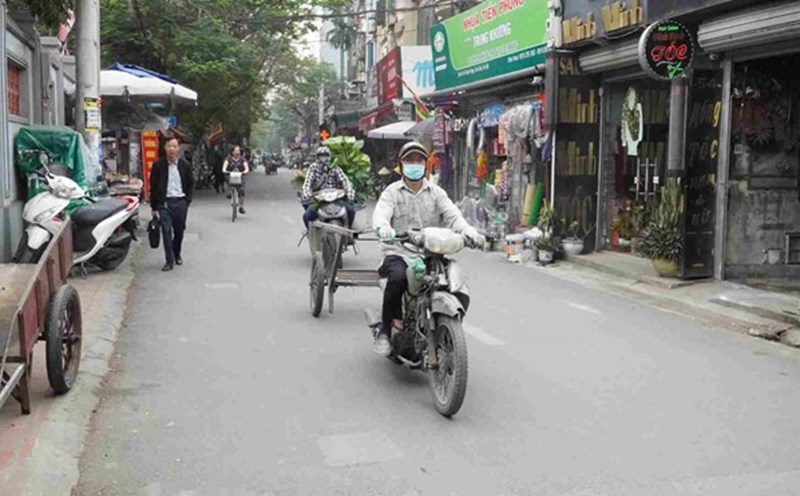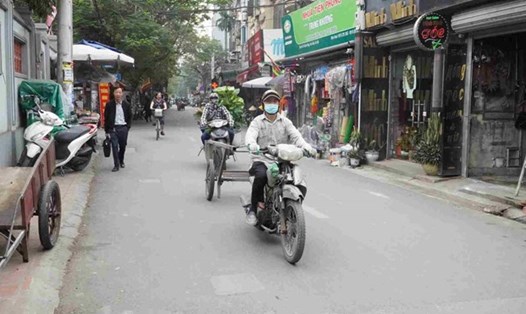The Ministry of Agriculture and Environment submitted a draft Decision of the Prime Minister stipulating the roadmap for applying national technical regulations on emissions of motorbikes and mopeds (motorbikes) circulating in Vietnam.
According to the draft, the time to start implementing emission inspection of motorbikes in circulation is as follows:
From January 1, 2027, motorbikes will be circulating in the area of 2 centrally-run cities, including Hanoi and Ho Chi Minh City.
From January 1, 2028, motorbikes will circulate in the remaining 4 centrally-run cities, including Hai Phong city, Da Nang city, Can Tho city and Hue city.
From January 1, 2030 for motorbikes circulating in the remaining provinces and cities. Depending on the actual situation, these provinces and cities can regulate the application of the deadline earlier.
Explaining the application of this roadmap for motorbike emission inspection, the Ministry of Agriculture and Environment said that air pollution in Vietnam in general and some large cities in particular tends to increase, mainly focusing on dust pollution, especially PM2.5 fine dust.
The development of air pollution nationwide is legally subjective in terms of time and tends to increase in both space and time in large cities and urban areas such as Hanoi and Ho Chi Minh City.
In particular, the Hanoi Capital Region in the last 3 months of 2024 and January 2025, there were many days at which the air quality index (AQI) was recorded at a "very bad" level, affecting environmental quality and directly public health.
One of the main causes of dust and emissions causing impacts and air pollution is pointed out to be due to the large number of motor vehicles participating in traffic.
Among them, many old vehicles do not meet emission standards and are old enough to be used.
According to the World Bank (WB) report in 2022, the PM2.5 emissions inventory data for 2015 in the Hanoi area from transportation activities (mainly road) is about 15%, and road dust is 23%.
According to a release based on research data contributed by the World Bank to PM2.5 concentration in Hanoi in the period of August 2019-7-2020 from transportation-related sources as follows: Direct emissions from transportation contribute 12%, secondary inorganic emissions from on-site sources (constructed from precursors including transportation sources such as NOx) contribute 18%, dust (including road dust mixed with pollution from transportation, dust from construction and cement) contributes 17%.
To control and minimize the impact of this emission source on air quality, from 2005 to present, the Prime Minister has issued a roadmap for applying emission standards and regulations for road motor vehicles.
However, there are no regulations to control and inspect the emissions of motorbikes circulating in Vietnam until the National Assembly passes the Law on Road Traffic Order and Safety, which stipulates the inspection of emissions of motorbikes and mopeds (Clause 2, Article 42 of the Law on Road Traffic Order and Safety).
On November 17, 2020, the Law on Environmental Protection was officially passed by the National Assembly. Clause 7, Article 65 stipulates: "The Government issues a roadmap for converting and eliminating vehicles using fossil fuels and vehicles that pollute the environment".
Clause 2, Article 102 stipulates that the Ministry of Natural Resources and Environment (now the Ministry of Agriculture and Environment) shall preside over and coordinate with the Ministry of Transport (now the Ministry of Construction) to submit to the Prime Minister to issue a roadmap for applying national technical standards and regulations on emissions of road motor vehicles in circulation in Vietnam, including vehicles in circulation such as motorbikes.
For the above reasons, the Ministry of Agriculture and Environment believes that the development and promulgation of the Prime Minister's Decision on the roadmap for applying national technical regulations on emissions of motorbikes in circulation in Vietnam is really necessary.











